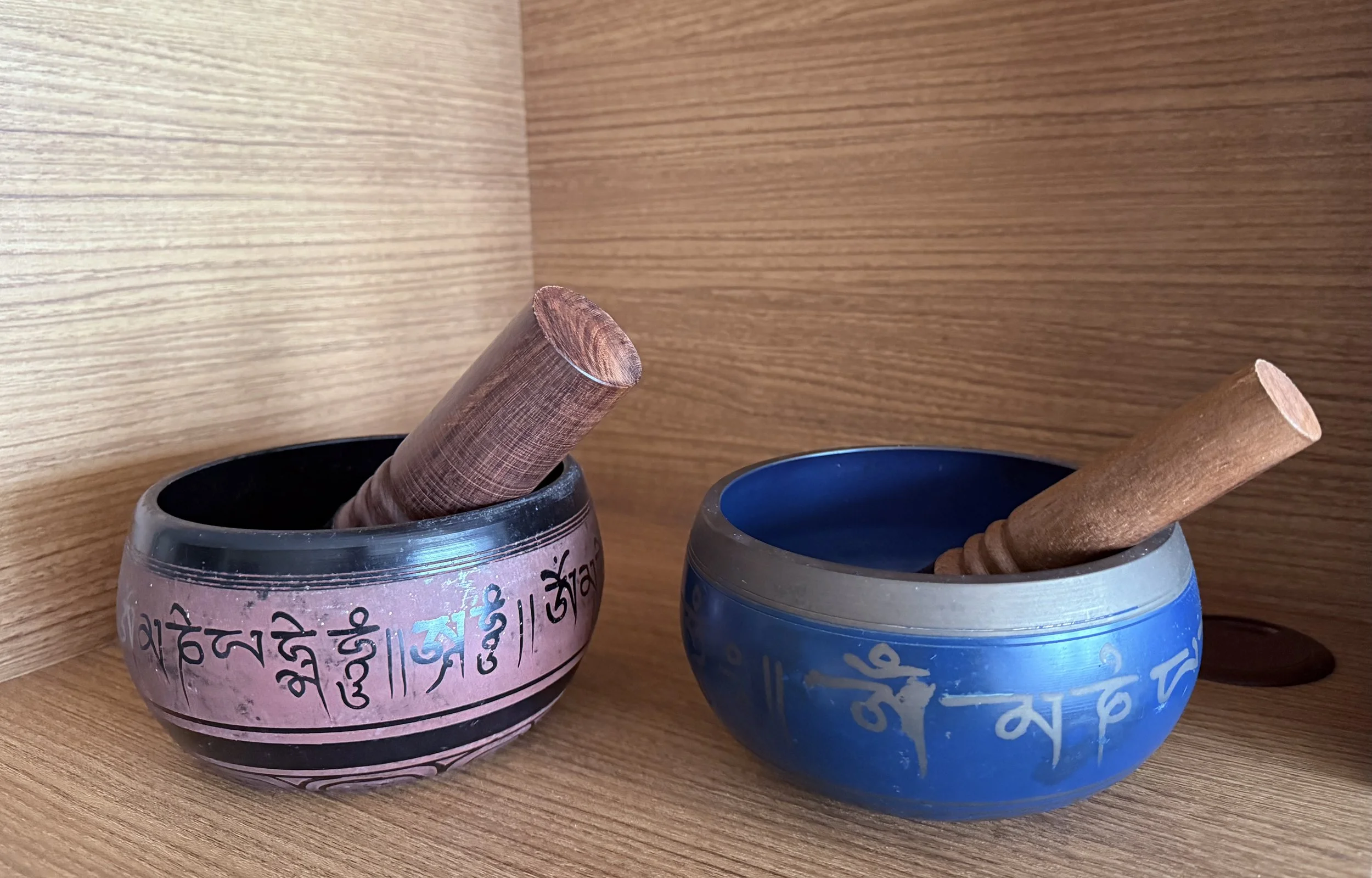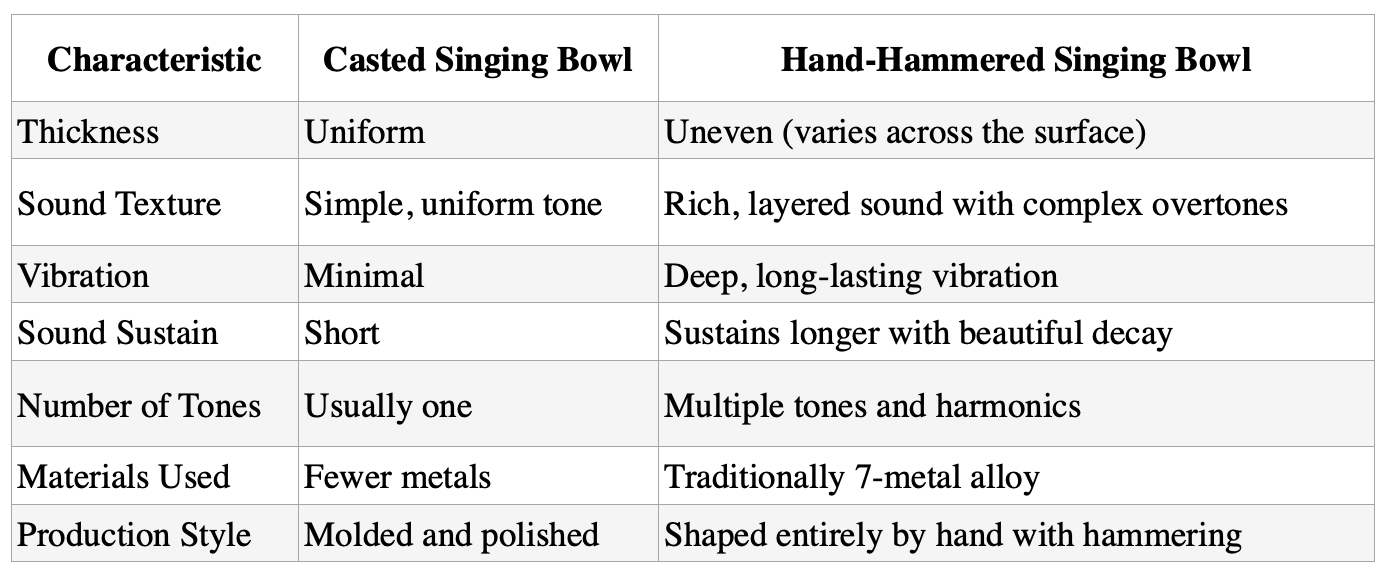These misconceptions are so common!
The Truth About Tibetan Singing Bowls: What Most People Don’t Know
Last night, as I settled back into the rhythm of home after a quick trip to Bangkok, I unpacked not just my luggage—but a thought that had been quietly forming for some time.
It’s time to clear the air on a couple of common misconceptions about singing bowls. Over the years, I’ve seen confusion crop up again and again, and I think it’s important to set the record straight—especially for those who are beginning their journey with singing bowl healing or looking to deepen their understanding.
Last December, I had the opportunity to meet a Thai monk. We took turns to put our offerings into the his bowl. He then gave us a prayer before heading to another floating villa.
Tibetan Bowls Are… Not Made in Tibet?
Yes, you read that right.
Over 10 years ago, I had the honor of studying with a world-renowned singing bowl master whose family has been crafting singing bowls for seven generations. One afternoon, as we sipped tea, he said something that stopped me in my tracks:
“In all my years, I’ve not found a singing bowl foundry in Tibet.”
That moment stayed with me.
Since then, I’ve received numerous emails from singing bowl manufacturers around the world—especially from Nepal and India—but not once from Tibet.
So where does the term Tibetan singing bowl come from? It’s more of a attractive label than a geographical one. It likely gained popularity because of the association between Tibetan culture and spirituality. But if we're being accurate, most of the singing bowls available today do not come from Tibet.
So What Should We Call Them?
Personally, I prefer the term Himalayan singing bowls. It’s more geographically accurate, and it honors the rich craftsmanship found in Nepal and India. In fact, in some Himalayan villages, you can still find singing bowls as ordinary household items—used not for healing, but for cooking or offerings.
While it’s true that Buddhist monks often use metal bowls to collect offerings, this ritual is practiced across many Buddhist traditions and isn’t unique to Tibet.
Someday, I do hope to visit Tibet—it's on my bucket list. But when I go, the very first thing I’ll be curious about is this:
Can I find a true singing bowl foundry there?
So far, all signs say no.
“Machine-Made” Singing Bowls? Not Quite.
Here’s another common mix-up I often see online:
a casted singing bowl being labeled as a “machine-made bowl.”
Let’s clarify.
If you ever visit a singing bowl shop in Nepal, India, or Bhutan, the shopkeeper will most likely tell you, “These are handmade.” And they’re not wrong.
Casted singing bowls are handmade—just in a different way.
Casted singing bowls are attractive. They are decorated and they are budget friendly.
So What Is a Casted Singing Bowl?
In simple terms, a casted singing bowl is made by pouring molten metal into a mold. Once it cools and hardens, the bowl is polished, tuned, and sometimes engraved. This method allows for consistent shapes and sizes, which helps meet global demand quickly and affordably.
However, this process is very different from the traditional hand-hammered method, where artisans heat, flatten, and hammer the metal plate by hand. Each blow creates subtle imperfections—imperfections that give the bowl its beautiful complexity and depth of sound.
So How Do You Tell the Difference?
Here’s a quick comparison to help you out:
Why This Matters
Understanding the difference between casted and hand-hammered bowls isn’t about being purist—it’s about choosing what aligns best with your intention. Whether you’re using a singing bowl for meditation, therapy, or sound healing, the quality of sound truly matters.
The next time you hear the phrase Tibetan singing bowl or machine-made bowl, I invite you to pause, take a breath, and go a little deeper.
As always, if you’re ever unsure about what bowl is right for you, I’m here to help. My goal is to help people like you connect with authentic singing bowls that support your healing journey in real, grounded, and meaningful ways.


